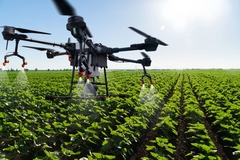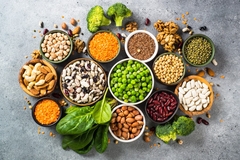“Massive action” required to halve food loss and waste by 2030, says new report
04 Sep 2019 --- More than one billion metric tons of food are collectively lost or wasted every year along the food supply chain, and actions to prevent further misuse cannot come quickly enough. This is according to the recently published report Reducing Food Loss and Waste: Setting a Global Action Agenda by the World Resources Institute (WRI), which identifies three key steps to halve food loss and waste by 2030. Robust examples include packaging solutions that extend shelf-life, as well as building capacity in practices to reduce losses, such as milk spills and food contamination.
At the end of the food supply chain, however, not enough work is currently being done to tackle food waste by consumers, according to Dr. Liz Goodwin, Senior Fellow and Director at WRI, who spoke with FoodIngredientsFirst.

“The biggest problem is household food waste by all of us as consumers and householders. Lack of consumer action will result in growth in consumer food waste which is likely to mean we do not achieve climate change targets, and so householders will experience the consequences of climate change,” she says.
The “Target-Measure-Act” approach of this report aims to set food loss and waste reduction targets, measure identifying hotspots of food loss and waste, and take action on the hotspots. The report also provides to-do lists for food chain actors, ranging from producers to packaging companies to consumers, to adopt “no regret” first steps toward taking action. Finally, it envisions 10 “scaling interventions” designed to ensure the Target-Measure-Act approach and to-do lists become a reality.
 Policymakers, financiers and researchers are being urged to supply more financial aid and create greater awareness.Some of the changes advocated include using appropriate harvesting equipment to maximize yields while minimizing crop damage on the production level, inventing, designing and mainstreaming packaging options or coatings that extend a product’s shelf-life on the packaging level, and educating staff on food waste reduction in hotels, restaurants, and catering services on the consumer level. Policymakers, financiers and researchers are also being urged to supply more financial aid and create greater awareness.
Policymakers, financiers and researchers are being urged to supply more financial aid and create greater awareness.Some of the changes advocated include using appropriate harvesting equipment to maximize yields while minimizing crop damage on the production level, inventing, designing and mainstreaming packaging options or coatings that extend a product’s shelf-life on the packaging level, and educating staff on food waste reduction in hotels, restaurants, and catering services on the consumer level. Policymakers, financiers and researchers are also being urged to supply more financial aid and create greater awareness.
“The global action agenda we’re proposing rests on big, bold ideas. I’m happy to say some are already underway, such as a rise in national public-private partnerships and new financing. Others would break fresh ground. We know this is ambitious, but when we look at the amount of food that is lost and wasted, it’s clear that such a massive challenge demands massive action,” says Katie Flanagan, WRI Associate and lead author of the report.
In a firm attempt to decelerate the environmental destruction of the planet, nations across the globe established a set of 17 objectives called Sustainable Development Goals (SDG) in 2015 as part of the 2030 agenda for sustainable development. SDG No. 12.3 specifically intends to halve “per capita global food waste at the retail and consumer levels and reduce food losses along production and supply chains, including post-harvest losses” by 2030.
The benefits of food loss and waste reduction are numerous. Not only has it been proven that national and city governments can save money through reducing food loss and waste, but also yield positive returns on investments in food loss and waste reduction efforts, notes the report. It can also close the gap between the food needed in 2050 and food available in 2010 by more than 20 percent, avoid further conversion of land into massive agricultural areas and lower greenhouse gas emissions by 1.5 gigatons per year by 2050.
This report was produced by WRI in collaboration with the Rockefeller Foundation, and in partnership with UN Environment, Natural Resources Defense Council, Iowa State University, The University of Maryland’s Ed Snider Center, The Consortium for Innovation in Postharvest Loss and Food Waste Reduction, Wageningen University and Research, the World Bank, and WRAP.
Reducing food waste has become a key concern for the food industry and has spurred some notable interventions. Australia’s national science agency, CSIRO, revealed how a “secret recipe” to encourage Black Soldier Flies to mate can help tackle food waste. Meanwhile, big innovation came in a small package with the release of Hazel Avocado. The quarter-sized sachet was designed to improve shelf-life and give suppliers more peace of mind when shipping produce.
“We still need to see more action but there is growing momentum. This report clearly shows the value of tacking food loss and waste as part of the climate agenda,” Dr. Goodwin concludes.
By Anni Schleicher













